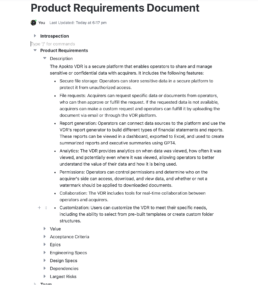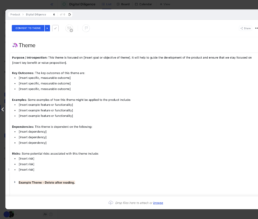Crafting Eloquent Solutions.
Brechin partners with everyone from start-ups to Fortune 100 companies, creating eloquent technology solutions tailored to modern problems and based on reliable frameworks.

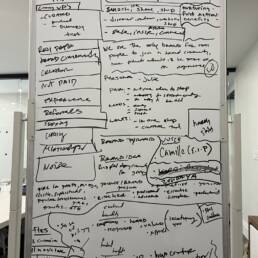
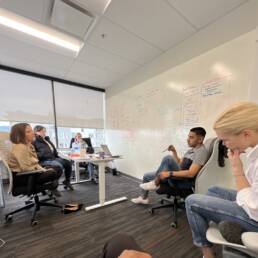
Research
We strongly believe in conducting comprehensive yet efficient research to ensure that our team and client partners have all the necessary information to make informed decisions.
We dive deep into the market to uncover the key players, discover what gives them an edge, and work out how to make things even better. We don’t miss a thing and identify where further exploration is needed for the most rewarding learning experience.
Our team comes together to spark discussions with key stakeholders to gain a better understanding of business objectives and desired outcomes. We excel in bringing different groups together and aligning them under one common goal, mapping out the perfect product experience.
We make a point to bring together different user groups and collaborate in order to evaluate business objectives. We make sure to listen to valuable user insights and apply them early on for the best product experience.
Strategy
We develop product strategies backed by thorough research to streamline our process and avoid the need to backtrack during key execution stages.
We place a strong emphasis on achieving business outcomes for our clients. We work closely with them to define their business strategies and develop feature sets that are aligned with their monetization and user growth potential.
Through developing extensive user flows, we are able to identify potential roadblocks and edge cases that may negatively impact the user experience, and address them before they become an issue.
We focus heavily on written requirements. Building Product Requirement Docs (PRDs) to outline the technical specifications and functionality needed to bring the digital product to life. All the way down to themes, epics and user stories to ensure cohesion between product, design and engineering.
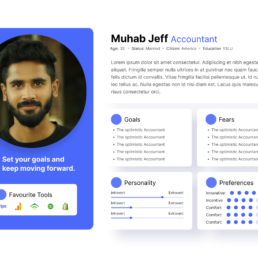


The first visual
Low-Fidelity Wireframes
Low fidelity wireframes are an essential tool in the product design process, as they allow for rapid iteration and testing of design concepts. By creating low fidelity wireframes, we can quickly get user feedback on the basic layout and functionality of a product before investing time and resources in more detailed designs. This iterative approach ensures that we are designing with the user in mind and creating products that meet their needs and expectations.
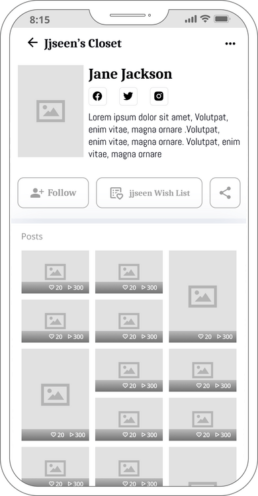
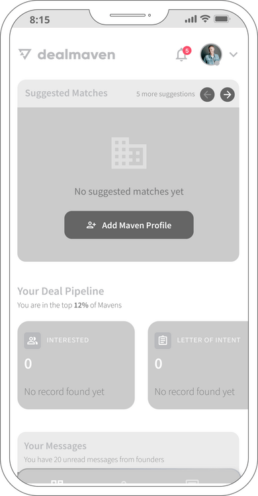

A Full Visual Representation
High-Fidelity Mock Ups & Prototypes
Detailed mockups and prototypes are important parts of designing a product. They show what the final product will look and feel like and can help find any problems before development starts. They make sure everyone on the team understands the product’s design and can make decisions faster during development.
Mockups
High-fidelity mockups are critical components of the product process as they provide stakeholders and customers with a clear visual representation of the final product.
Prototypes
High-fidelity prototypes are critical components of any project. They provide a 1:1 experience of how the product will look. Some clients even use these mockups to sign contracts and raise capital.
Our last step
Product Process & Documentation
The product process involves a series of steps that may include research, planning, design, development, testing, and launch. Throughout each step, documentation is created to capture decisions made, requirements defined, designs developed, and feedback received.
Keeping everyone on the same page
PRDs provide a clear and comprehensive description of the product requirements, including its features, functionality, and user experience, which helps ensure all stakeholders are on the same page and working towards the same goal.
They serve as a reference point throughout the product development process, ensuring that the development team is building the right product and making informed decisions based on the documented requirements.
Product Theme Organization
Themes, which provide a high-level overview of the main areas of focus for a product release, are crucial in product development and are often composed of groups of epics, which are large bodies of work that get broken down.
By organizing epics into themes, teams can better prioritize work, focus their efforts on the most critical features, and ensure that all work aligns with the product vision and goals. This also helps stakeholders understand how different pieces of work contribute to the overall product release and ensure that everyone is working towards a common objective.
Epics for Alignment
Epics are essential because they provide a high-level view of the product's functionality and help to define the main areas of focus for a release. They allow teams to break down large projects into smaller, more manageable chunks of work, making it easier to prioritize tasks and ensure that everyone is working towards the same goals.
They're are often a breakdown of themes, which are the main areas of focus for a product release. By breaking down themes into epics, teams can better understand the scope of each area and define the work that needs to be done. Epics also help to identify any dependencies between tasks and ensure that all aspects of the project are taken into account during the planning phase.

Power of User Stories
User stories are essential as they provide a clear, concise, and human-focused description of a product feature or functionality, helping teams stay aligned on the desired outcomes.
User stories are often broken down from larger bodies of work called epics, which are a breakdown of themes, helping to prioritize and manage work more effectively. By utilizing user stories, we can ensure that the team stays focused on delivering value to the customer and achieving the desired business outcomes.



